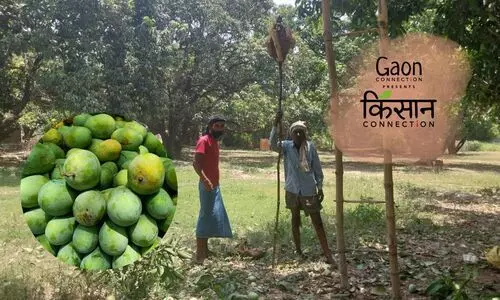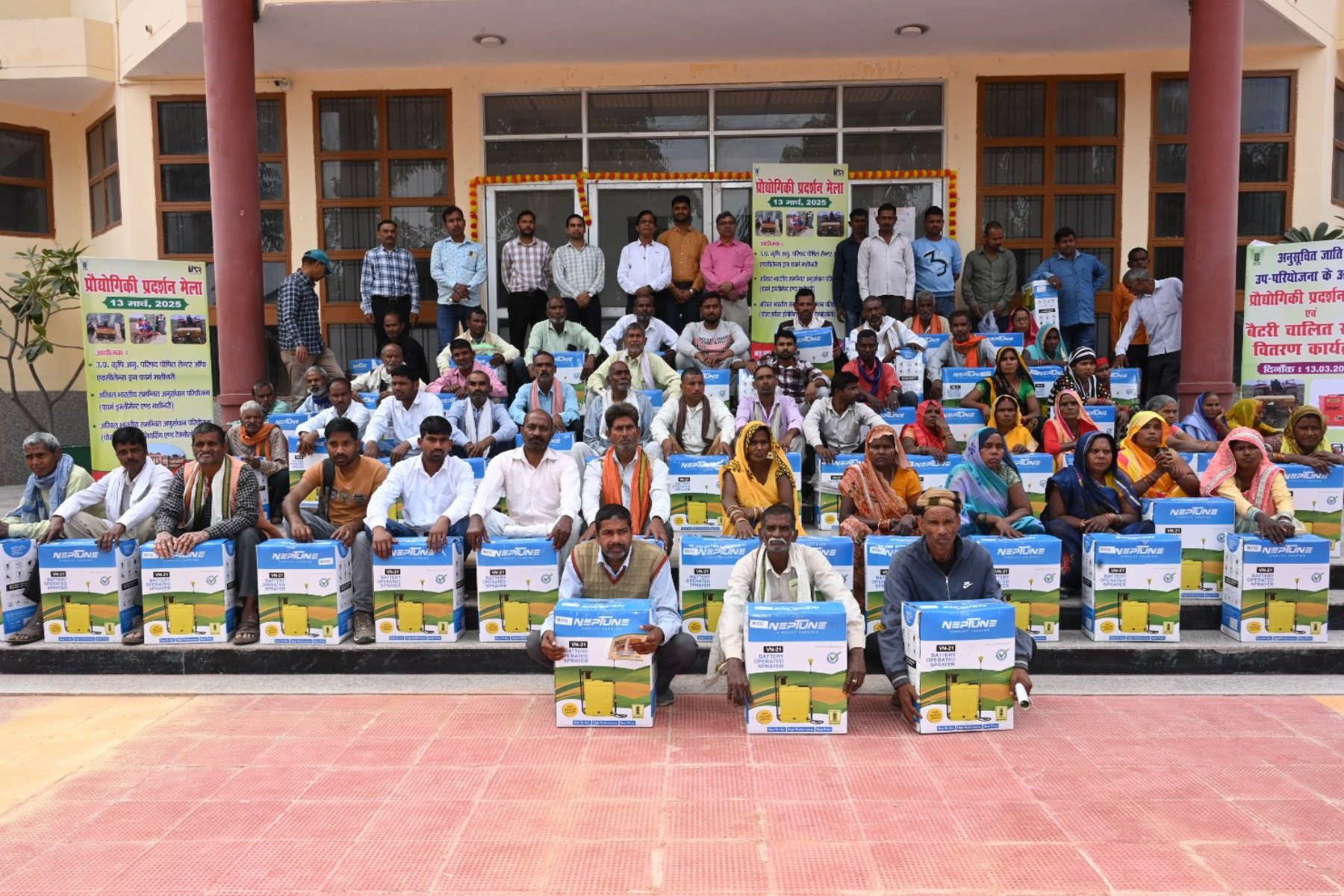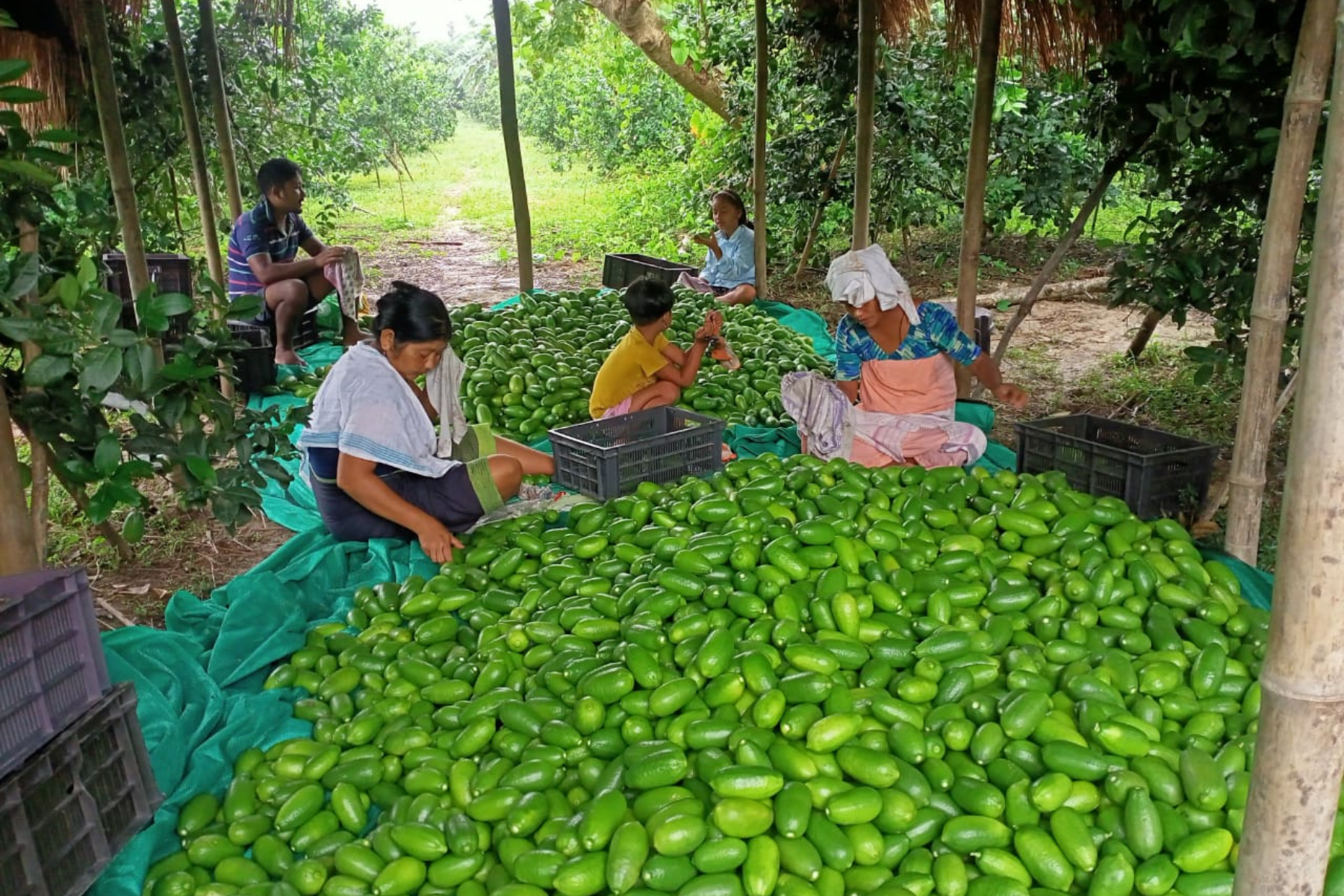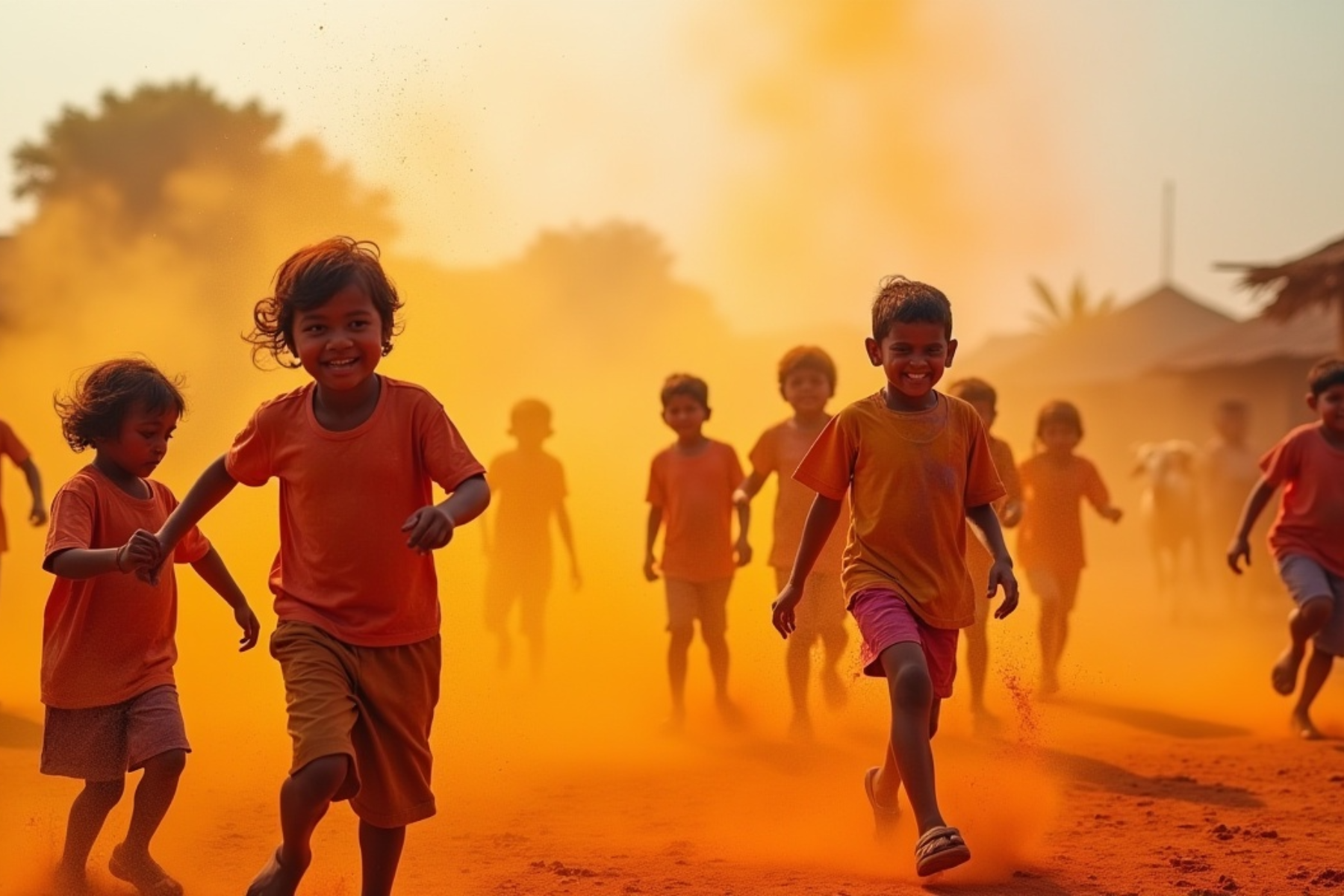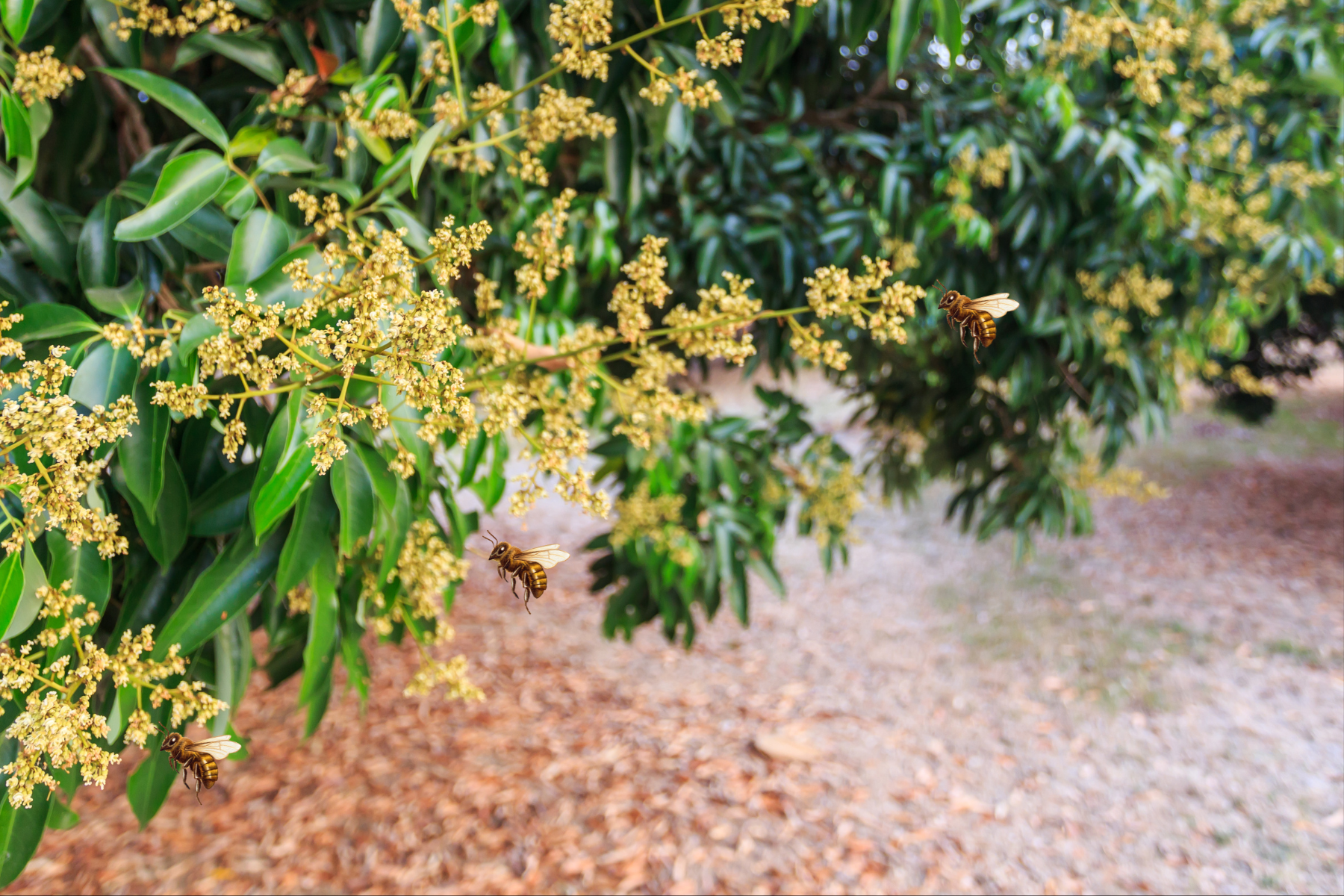Varanasi, Uttar Pradesh
On March 31 this year, the residents of Varanasi had yet another reason to celebrate their heritage city as the district’s famous langda variety of mango fruit was certified with the coveted geographical indication (GI) tag.
However, now when the fruit is ripe for harvest, its production this season has been far below the cultivators’ expectations and mango farmers in Uttar Pradesh, which is India’s top mango producing state, are complaining of heavy losses due to unseasonal hail storms and rainfall in April and May months.
“I give my langda mango orchard on a short term lease for six months for Rs 60,000. There are 100 trees in my orchard and this year due to erratic weather and unseasonal rainfall, I am only getting Rs 45,000 for my orchard. The farmer who has taken it on lease is not in a condition to pay me the full amount as he is facing high losses,” Rajendra Maurya, a 50-year-old orchard owner from Barisiyanpur village in Cholapur block, told Gaon Connection.
“The mango flowers were destroyed due to hail storms and rainfall in April and May months, which was unprecedented in my experience as an orchard owner for the last 20 years,” said Maurya. “The damage was such that the production has fallen from 60 tonnes to 30 tonnes from my orchard spread over about 50 bigha! It will adversely affect my own finances as this orchard is the sole source of income for me for six months in a year,” the farmer added. (1 tonne= 1,000 kilogrammes)
According to Varanasi district’s Department of Horticulture, there are a total of 1,635 orchard owners in the district who cultivate the langda variety of mangoes. And the production this year has been below target.
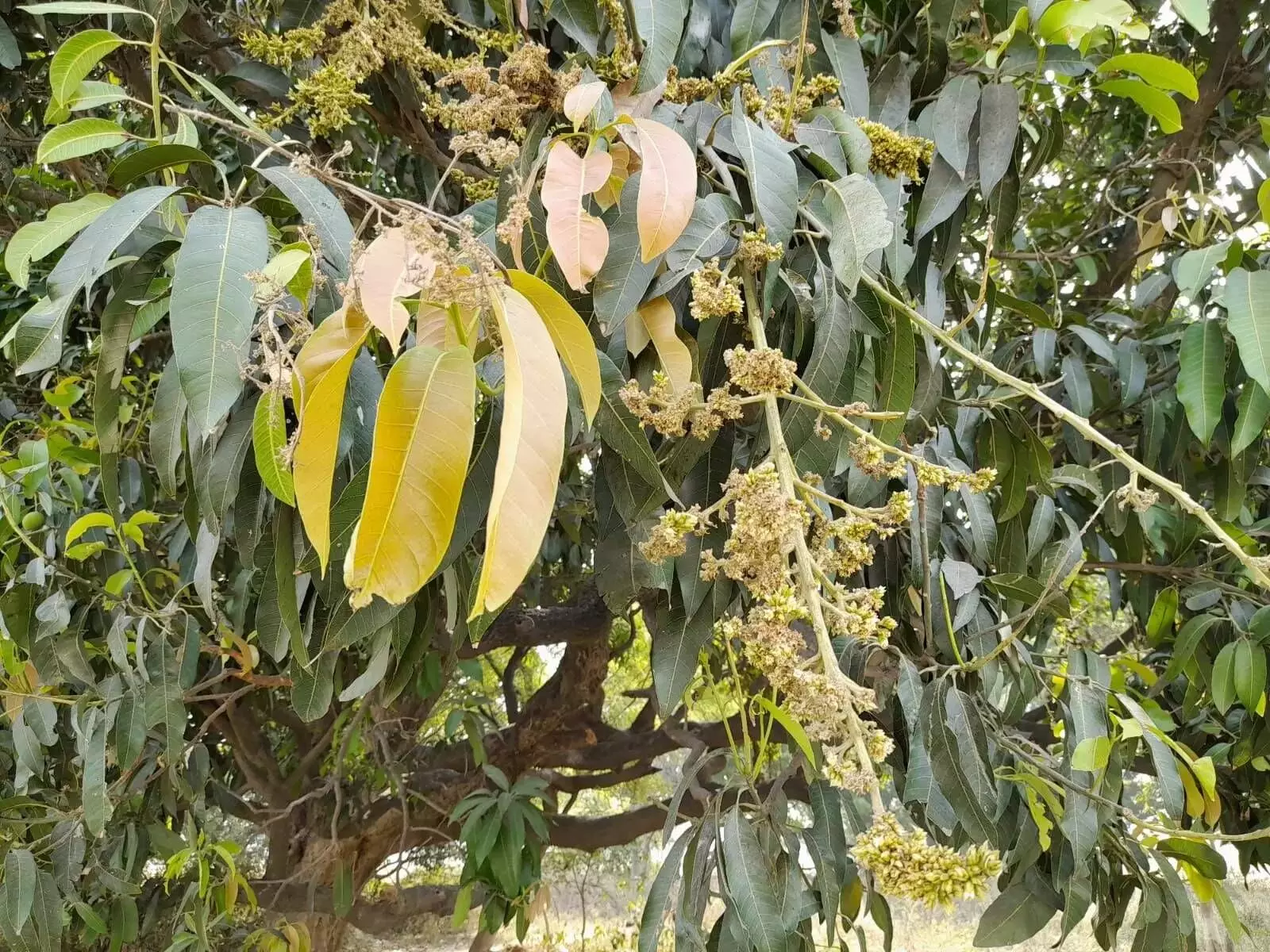
The mango flowers were destroyed due to hail storms and rainfall in April and May months.
“We had designated a target of 2,100 tonnes of langda mango production this year. The harvest season is at its peak and so far we have recorded a production of 1,410 tonnes,” Jyoti Kumar Singh, District Horticulture Officer, told Gaon Connection. Apart from erratic weather, the official blamed the cultivators for not being careful about timely irrigation, which, he said, had contributed to their losses.
Also Read: Bad news for mango lovers. Production of the fruit might take a hit this year
Predictably, langda mangoes are selling at a high price this summer season. Whereas last year the sale price was Rs 60 per kilogramme, this year consumers are complaining of having to pay up to Rs 100 a kilo.
About 15 kilometres away from Maurya’s orchard, Ajay Kumar Rajbhar is also counting his losses. A mango cultivator and trader from Rustampur village in Chiraigaon block, Rajbhar had taken 250 bighas [about 60 hectares] of orchard on lease for a price of Rs 150,000.
“Apart from the inclement weather, I also faced hardships in availing the insecticides on time. As a result, the pests have wreaked havoc on the harvest. Half of the mangoes got destroyed by hail storms and the remaining half is witnessing a reduced growth due to the infestation of pests,” the farmer told Gaon Connection.
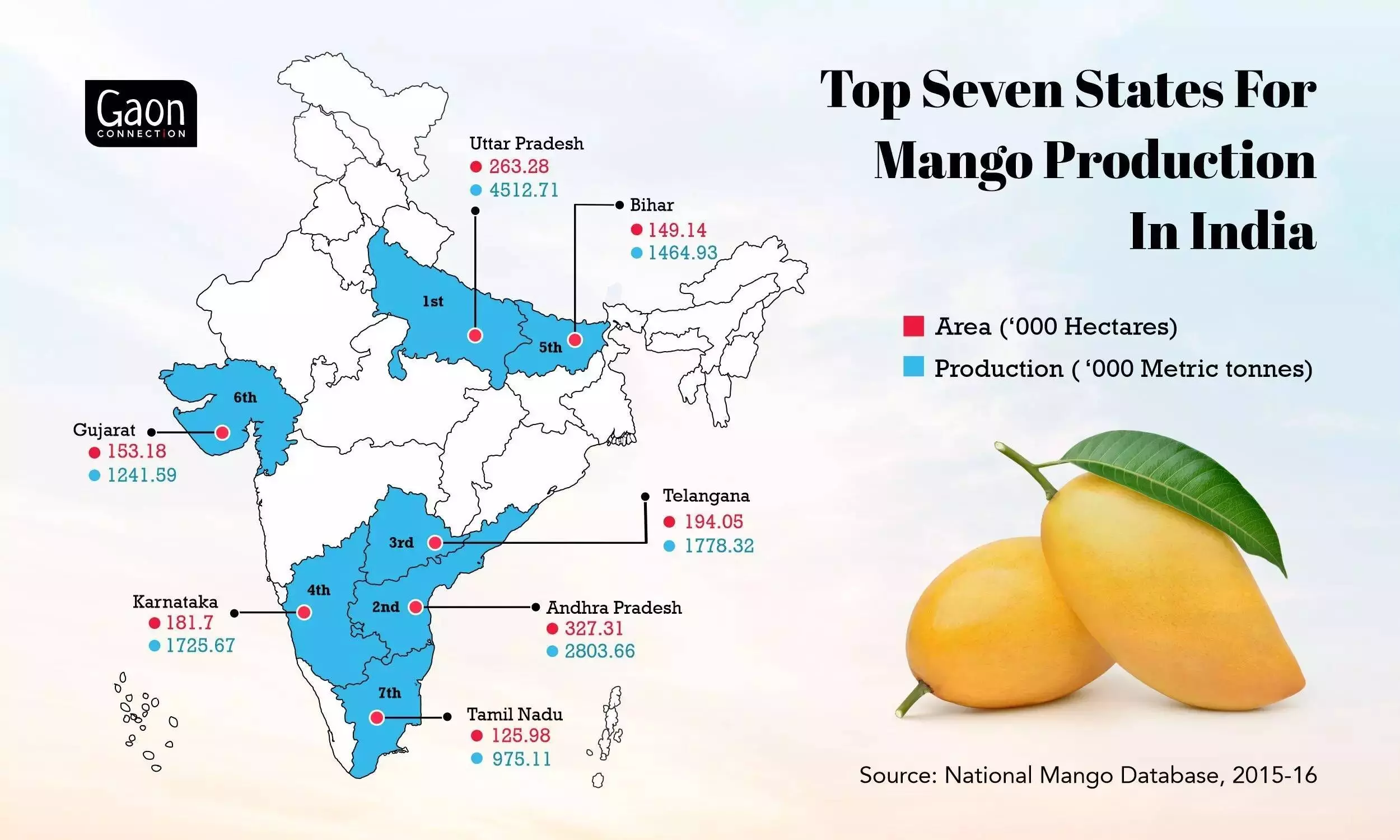
“As per the weather advisories issued by the udyaan vibhaag [horticulture department], we should brace for dust storms in the coming weeks and we are cautioned to conclude the harvest as soon as possible. Imagine our plight. This year has been a headache for mango cultivators,” complained Rajbhar.
Also Read: A mango variety that fruits thrice a year and is suitable for kitchen gardening
Weather woes
Avdhesh Narayan Singh, assistant professor, Department of Horticulture in Varanasi’s Udai Pratap Degree College told Gaon Connection that the excessive heat in March this year had wilted the mango flowers which had adversely affected the fruition.
“Oppressive heat in the nascent stages is detrimental for any fruit’s flower. The damage in flowers will reflect on the fruit. March was unexpectedly hot this year and the subsequent hail storms in April and May unleashed a complete disaster on the crop,” said the professor.
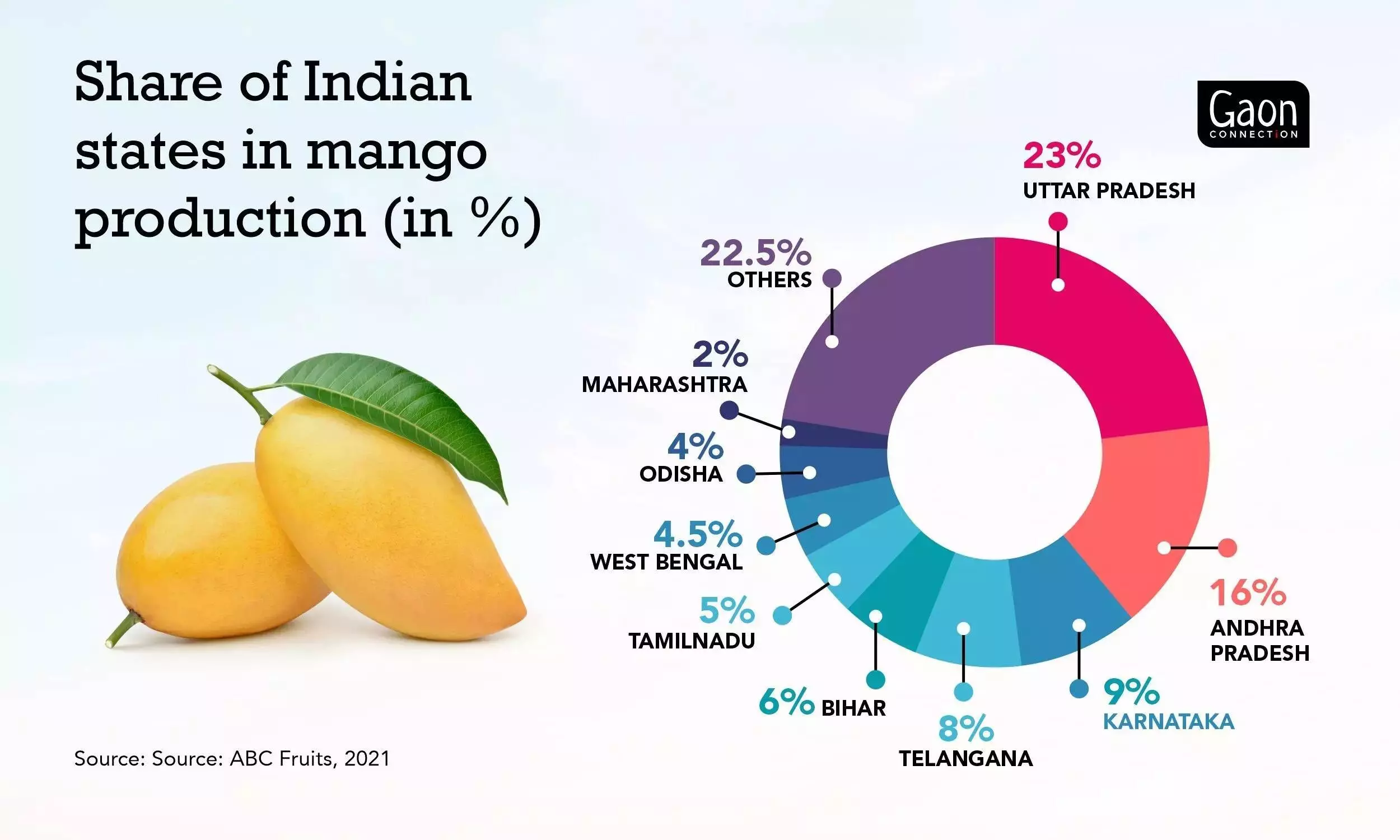
Amongst mango cultivators, the worst affected are the farmers whose sole source of livelihood is their annual mango harvest. Subhash Kumar Gautam from Teem Birsiyanpur village is one such farmer.
“I have some 50-60 trees in my orchard. For farmers like us, it’s exploitative that I have to sell my produce at the same price which is Rs 25-30 per kilogramme but the traders are selling it at Rs 70-Rs 80. This is unfair. Why should only the poor bear the brunt of losses?” complained Gautam.
Meanwhile, District Horticulture Officer Jyoti Kumar Singh assured that the department will soon set up camps to raise awareness about the optimum production of mangoes.
Also Read: Getting Hammered from Pole to Pole and Tropic to Tropic
Mango production in India
India is the world’s largest producer of mango producing almost half of the world’s mangoes. Data shows that India produces almost half of the world’s mangoes with annual output touching 20.26 million tonnes during the 2019-20 crop year (July-June).
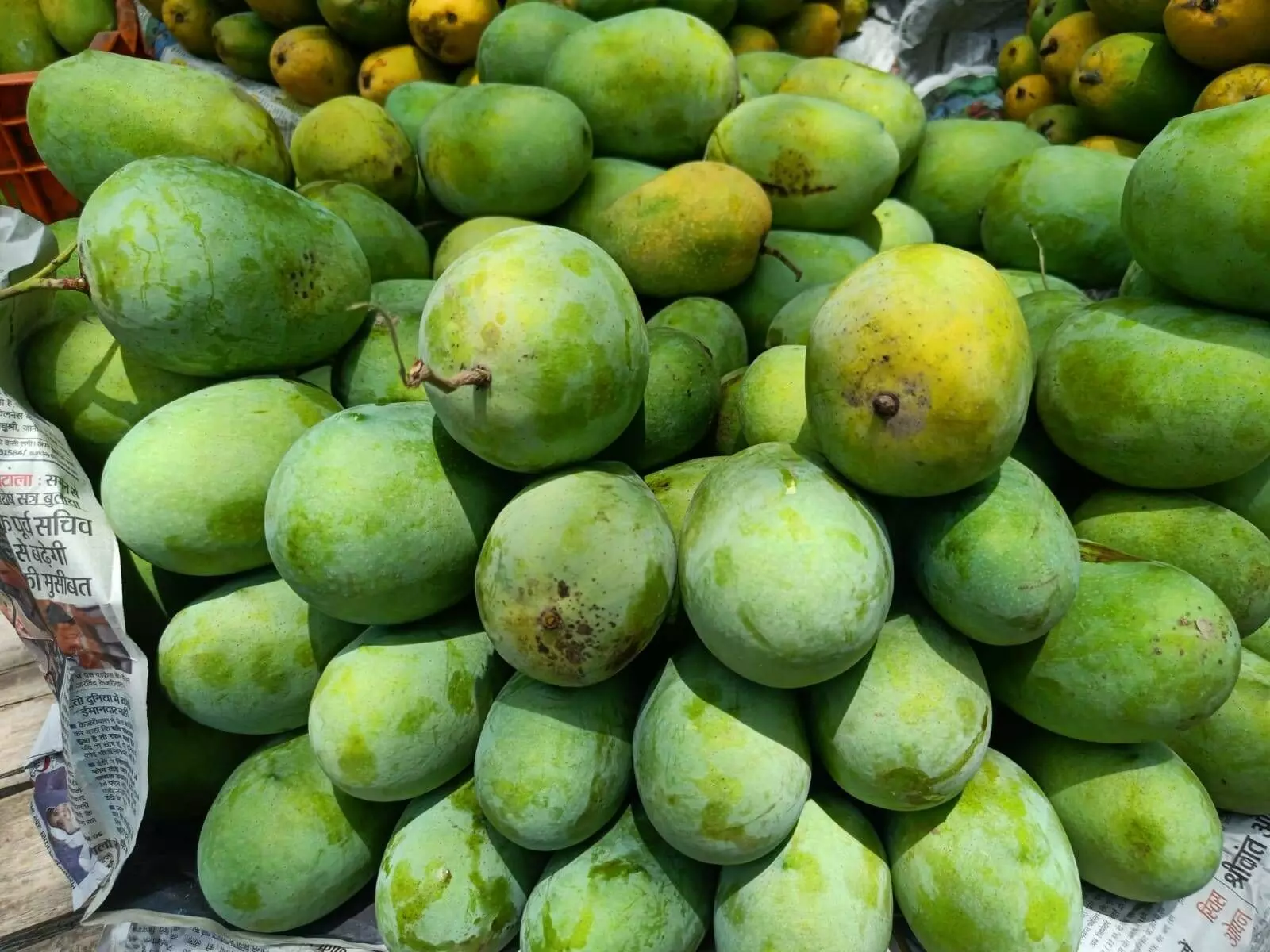
The Langra mango, is also known as Benarasi Langra, is a mango cultivar that was first cultivated in Varanasi about 250 to 300 years ago. Photo by Divendra Singh
Almost 1,000 varieties of the fruit are grown here, but only 30 are used commercially. According to the Ministry of External Affairs, exports of fresh mangoes from India increased from 20,302 tonnes in 1987-88 to 46,789.60 tonnes in 2019-20.
According to Agricultural & Processed Food Products Export Development Authority (APEDA), an autonomous organisation under the administrative control of the Department of Commerce, Maharashtra’s Alphonso forms the bulk of exports from the country; other popular varieties include Kesar, Langda and Chausa.
As per the Indian Horticulture Database, which is maintained by the Indian Agricultural Research Institute (ICAR), Uttar Pradesh is the top producer of mango in the country followed by Andhra Pradesh, Telangana, Karnataka and Bihar.

